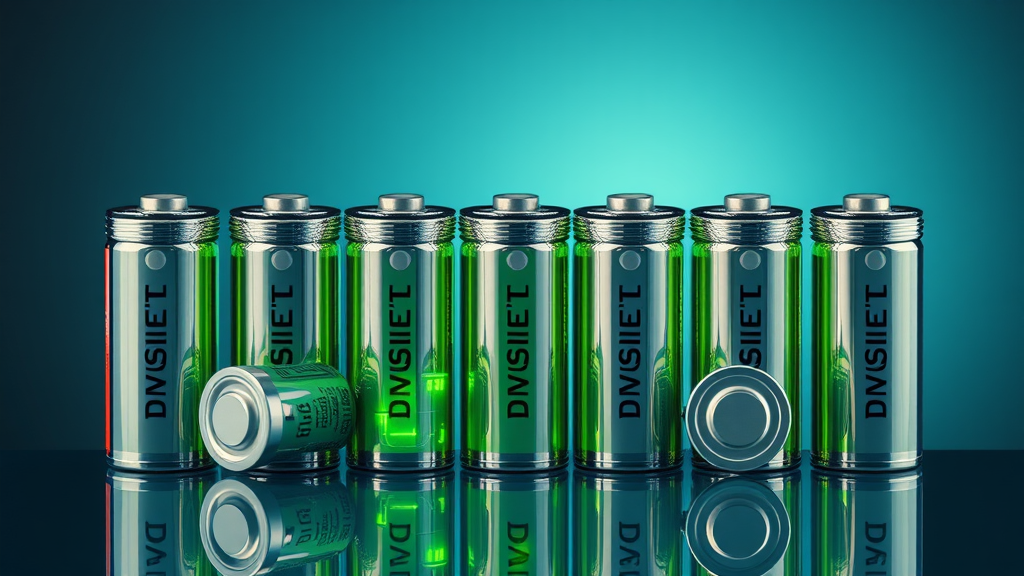Physical Address
304 North Cardinal St.
Dorchester Center, MA 02124
Physical Address
304 North Cardinal St.
Dorchester Center, MA 02124
No, only lithium-ion batteries are rechargeable; lithium primary batteries are single-use.

When exploring the world of lithium batteries, many people wonder about the rechargeability of lithium batteries. Not all lithium batteries are created equal, and their ability to be recharged varies significantly depending on their specific type and design.
Lithium batteries come in two primary categories: primary (non-rechargeable) and secondary (rechargeable) batteries. Primary lithium batteries are designed for single-use applications, typically found in devices like smoke detectors, watches, and medical equipment. These batteries cannot be safely recharged and will degrade or potentially become hazardous if attempted to be recharged.
Secondary lithium batteries are specifically engineered to be recharged multiple times. The most common rechargeable lithium battery types include:
Lithium-ion batteries are the most prevalent rechargeable lithium battery type. They power numerous electronic devices, including:
The internal chemistry of lithium batteries determines their rechargeability. Rechargeable lithium batteries contain special compounds that allow electrons to move back and forth between the battery’s positive and negative terminals during charging and discharging cycles.
To determine if a lithium battery is rechargeable, users can check several indicators:
Attempting to recharge a non-rechargeable lithium battery can lead to serious safety risks, including:
Rechargeable lithium batteries have a finite number of charge cycles. Typically, they can be recharged between 300-500 times before experiencing significant capacity degradation. Factors affecting battery life include:
Ongoing research continues to improve lithium battery technology, focusing on increasing energy density, reducing charging times, and enhancing overall battery performance.
For more detailed information about lithium batteries, consider exploring these authoritative sources:
Understanding the nuances of lithium battery types is crucial for proper device maintenance and safe usage. Always consult manufacturer guidelines and professional advice when handling or charging lithium batteries.
When exploring the world of lithium batteries, consumers often encounter a diverse range of options that might seem confusing at first glance. Not all lithium batteries are created equal, and understanding their unique characteristics can help you make informed decisions about power sources for various devices.
Lithium battery technology encompasses several distinct variations, each designed for specific applications:
Most modern lithium batteries are indeed rechargeable, but not all of them share the same properties. Lithium-ion batteries, which power most electronic devices today, are specifically designed to be recharged multiple times. These batteries have become the standard for:
Some specialized lithium batteries are created for single-use applications. These primary lithium batteries are typically found in:
Performance Considerations for Lithium Batteries
The rechargeability of lithium batteries depends on several critical factors:
| Factor | Impact on Rechargeability |
|---|---|
| Chemical Composition | Determines charge cycle capabilities |
| Manufacturing Quality | Influences overall battery longevity |
| Charging Infrastructure | Affects battery’s ability to be recharged safely |
Lithium battery technology continues to evolve, with researchers constantly developing more efficient and longer-lasting power solutions. The trend is moving towards batteries that can:
Practical Recommendations
When selecting lithium batteries, consider these essential guidelines:
Expert Resources for Further Learning:
Battery University
U.S. Department of Energy Battery Research
Safety remains paramount when dealing with lithium batteries. Always follow manufacturer guidelines and use certified charging equipment to prevent potential risks associated with improper battery management.
The complexity of lithium battery technology means that while most are rechargeable, specific applications might require specialized non-rechargeable variants. Understanding these nuances helps consumers and professionals make informed decisions about power solutions.
By recognizing the diverse world of lithium batteries, users can optimize their device performance, extend battery life, and make environmentally conscious choices in power consumption.
Understanding lithium batteries reveals a complex landscape of technological innovation and practical applications. Not all lithium batteries are created equal, with significant variations in their design, purpose, and rechargeability. While many modern lithium-ion batteries are indeed rechargeable, there are specialized lithium battery types like lithium metal and lithium primary batteries that are single-use.
Consumers and professionals must recognize the distinctions between different lithium battery technologies to make informed decisions. The key lies in understanding specific battery characteristics, intended use, and performance requirements. Some batteries are optimized for high-drain devices, while others prioritize long-term storage or specific environmental conditions.
The future of battery technology continues to evolve, with ongoing research focusing on improving energy density, charging speeds, and sustainability. As renewable energy and electric vehicle markets expand, the demand for advanced, reliable lithium battery solutions will only increase. This means more sophisticated, adaptable battery designs that can meet diverse technological needs.
For anyone working with or considering lithium batteries, careful selection based on specific requirements is crucial. Whether you need a rechargeable battery for consumer electronics, medical devices, or industrial applications, understanding the nuanced differences between lithium battery types can significantly impact performance, cost-effectiveness, and overall reliability.
Ultimately, the world of lithium batteries is dynamic and continuously advancing. By staying informed about emerging technologies and understanding the fundamental differences between battery types, users can make more strategic choices that align with their technological and environmental goals.